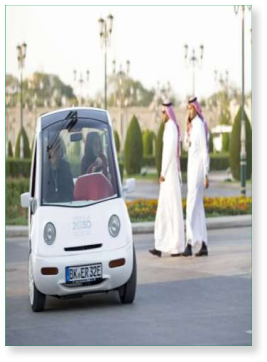Investment Potential In Saudi Arabia's New Energy Sector
Investment Potential In Saudi Arabia's New Energy Sector
Wind Energy
With year-round average wind speeds of 6.0m-8.0m/s over most of the country, Saudi Arabia has a high potential for wind energy development, particularly in the northeast, central region and western mountain range. 2021 saw the start of the commissioning of the Damad Jadal Wind Power Station, with a capacity of 400MW, marking the launch of the first large-scale wind power project in Saudi Arabia. Developed by a consortium led by French power company EDF Renewables and UAE-based Masdar, the project consists of 99 turbines, each with a power output of 4.2MW, and is being developed by Vestas, the supplier and EPC contractor.
Compared to PV, Saudi Arabia's wind power growth is slower, and the manufacturing capacity of local companies is not yet complete, but Chinese companies have certain advantages in the wind energy sector. For example, Goldwind signed a memorandum of cooperation in 2019 to explore the introduction of wind power industry R&D, manufacturing and supporting industries in Saudi Arabia; in October 2022, China Energy Construction and ACWC Power signed the Saudi Arabia PIF Phase II 2.6GW PV project; and in 2023, China Electric Power Construction and France's Total signed an EPC contract for the Saudi Arabia WAD PV project.
Photovoltaic
Saudi Arabia is geographically favorable, with an average sunshine duration of up to 8.9 hours, a horizontal solar radiation of 5.6kW⋅ℎ/?2, and a solar irradiance of 250W/?2, which are higher than the global average of high potential regions for the development of the solar industry (100W -200W/?2).
According to the Renewable Energy Plan 2030 released in 2019, Saudi Arabia is actively promoting new energy generation projects, with solar energy as the main development direction. The specific target is to achieve a new energy power generation capacity of 27.3GW by 2023; and 60GW of renewable energy utilization by 2030, of which 40GW will be provided by solar energy.
Hydrogen Energy
Saudi Arabia's National Hydrogen Strategy plans to produce 2.9 million tons of hydrogen/year by 2030, and further increase hydrogen production to 4 million tons/year by 2035. in June 2019, Saudi Arabia's first hydrogen refueling station was inaugurated, and in July 2020, Saudi Arabia's ACWA Power entered into a partnership agreement with U.S.-based Air Products to develop and build a US$5 billion world-class green hydrogen-based ammonia plant with a capacity of 650 tons/day in the new city of NEOM, which will be equipped with solar, wind and storage power systems with a capacity of 4GW. world-class green hydrogen-based ammonia plant with a capacity of 650 tons/day, which will be equipped with a solar, wind and storage power generation system with an installed capacity of 4GW and is expected to be commissioned in 2025.
Nuclear Power
In Vision 2030, Saudi Arabia proposes to build 16 nuclear power plants over the next 25 years, with an investment of more than $80 billion. 2022 saw the establishment of the Saudi Nuclear Energy Holding Company (SNEHC), which is responsible for building nuclear power plants, generating electricity, generating heat and desalinating seawater, as well as participating in domestic and international nuclear projects. Meanwhile, Saudi Arabia also plans to build a national platform to attract talents in nuclear science and technology.

 English
English
RV Power Battery PACK Solution
detailed description of the power battery PACK solution scheme for RV: 1. Battery type selection 2. Battery capacity and voltage 3. PACK structure design 4. Thermal management design 5. Safety design 6. Performance optimization
Read MoreLithium Iron Phosphate Battery Cycle Life and Factors Affecting Life
As a leader in lithium battery technology, lithium iron phosphate batteries are highly regarded for their excellent performance and long life.
Read MoreLithium Battery And Lead-Acid Battery Transport Un Number Description
Lithium battery packs are classified in Class 9 dangerous goods - miscellaneous dangerous substances, the United Nations number is UN3080, UN3081, UN3090, UN3091, and the transport packaging category is Class II
Read More